Easter is celebrated in many different ways across the globe — with bright, surprising, and deeply heartwarming traditions. In 2025, Easter falls on April 20. Millions of people around the world will gather with their families, go to church, prepare festive meals, and follow traditions passed down through generations.
Here’s how Easter is celebrated in different parts of the world:
Italy: A Celebration for the Soul and the Stomach
In Italy, Easter — Pasqua — is one of the most important holidays, especially for Catholics. In Rome, a grand Mass is held on Easter Sunday, led by the Pope himself at St. Peter’s Square. Thousands of people travel to witness it in person.
Italy: A Celebration for the Soul and the Stomach
In Italy, Easter — Pasqua — is one of the most important holidays, especially for Catholics. In Rome, a grand Mass is held on Easter Sunday, led by the Pope himself at St. Peter’s Square. Thousands of people travel to witness it in person.
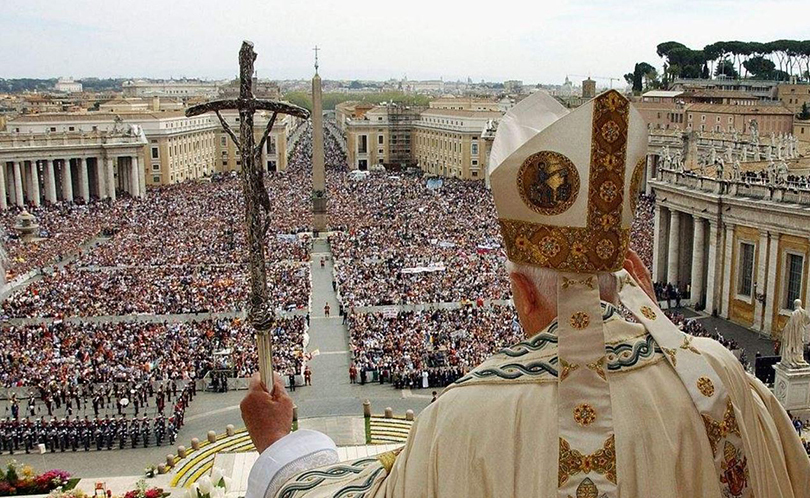
But Easter in Italy isn’t only about the church — it’s also about food. Lamb, artichokes, and Colomba di Pasqua — a dove-shaped sweet bread — is a must-have on the holiday table. In Florence, a spectacular show takes place called Scoppio del Carro (“Explosion of the Cart”). A special rocket shaped like a dove (Colombina) is launched from the cathedral; it flies along a wire, ignites a cart filled with fireworks, and returns to the church. Legend has it that if everything goes smoothly, the year will be a lucky one!
Greece: Midnight Service and Red Eggs
In Greece, Easter is the most important holiday of the year. It is celebrated according to the Orthodox calendar, and in 2025, the date coincides with Catholic Easter.
Greece: Midnight Service and Red Eggs
In Greece, Easter is the most important holiday of the year. It is celebrated according to the Orthodox calendar, and in 2025, the date coincides with Catholic Easter.

On Saturday evening, everyone heads to church. Exactly at midnight, candles are lit, bells ring, and people greet each other with “Christ is risen!” After the service, a feast follows with roasted lamb and a special soup called magiritsa.
Instead of multicolored eggs, Greeks use bright red ones — symbolizing the blood of Christ. There's also a fun game: egg tapping! The person whose egg stays uncracked is said to have good luck in the coming year.
Germany: Easter Trees and Bonfires
In Germany, Easter is a celebration of light, spring, and, of course, bunnies. The tradition of the Easter Bunny — Osterhase — originated here. Germans decorate trees with hanging eggs — these are called Ostereierbaum.
Instead of multicolored eggs, Greeks use bright red ones — symbolizing the blood of Christ. There's also a fun game: egg tapping! The person whose egg stays uncracked is said to have good luck in the coming year.
Germany: Easter Trees and Bonfires
In Germany, Easter is a celebration of light, spring, and, of course, bunnies. The tradition of the Easter Bunny — Osterhase — originated here. Germans decorate trees with hanging eggs — these are called Ostereierbaum.

In rural areas, people light bonfires in the evenings to symbolically bid farewell to winter and welcome spring. On the Easter table, you'll find carrot cake, braided buns, and bunny-shaped cookies. Kids join in Easter egg hunts — the one who finds the most eggs wins!
The Philippines: Street Plays and Morning Parades
In the Philippines, Easter marks the end of Holy Week — the most spiritually significant time of the year. On Good Friday, some cities host dramatic street plays reenacting the crucifixion.
The Philippines: Street Plays and Morning Parades
In the Philippines, Easter marks the end of Holy Week — the most spiritually significant time of the year. On Good Friday, some cities host dramatic street plays reenacting the crucifixion.
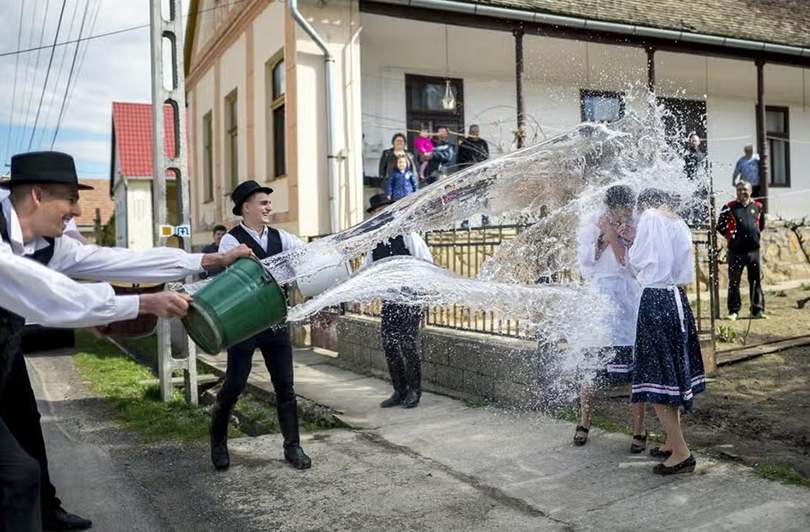
Sunday, however, brings pure joy. The most touching moment is Salubong (“The Encounter”): at dawn, two processions meet — one carrying a statue of the risen Christ, the other the Virgin Mary in mourning. When they meet, Mary's black veil is lifted — a symbol of the end of sorrow. What follows is a celebration full of songs, dances, and plenty of food.
Sweden: Witches and Feathers
Swedish Easter feels a lot like Halloween — with costumes and sweets. On Maundy Thursday, children dress up as little witches with drawn-on freckles and scarves, going door to door, trading drawings for candy.
Sweden: Witches and Feathers
Swedish Easter feels a lot like Halloween — with costumes and sweets. On Maundy Thursday, children dress up as little witches with drawn-on freckles and scarves, going door to door, trading drawings for candy.
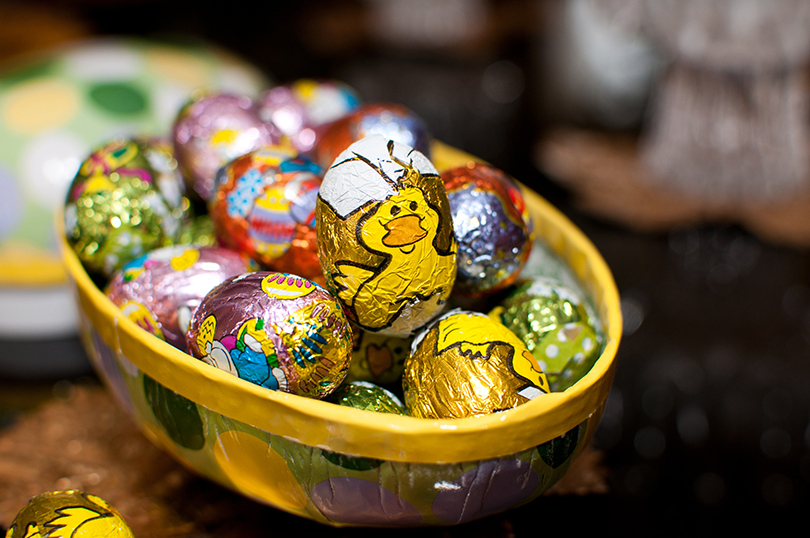
Instead of flowers, homes are decorated with twigs adorned with colorful feathers — called påskris. On the table: eggs, fish, salmon, and lots of sweets. The overall vibe is cozy and homey.
Mexico: Processions and Spiritual Reflection
In Mexico, Easter is part of the two-week Semana Santa (Holy Week). It's a time of silence, faith, and reflection. Large processions reenact scenes from Jesus’ life.
Mexico: Processions and Spiritual Reflection
In Mexico, Easter is part of the two-week Semana Santa (Holy Week). It's a time of silence, faith, and reflection. Large processions reenact scenes from Jesus’ life.
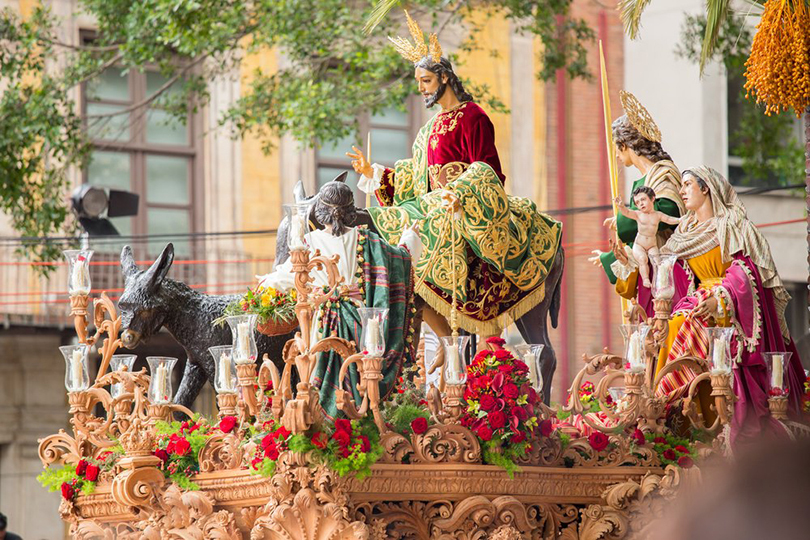
Many families travel to visit relatives. On Easter Sunday, a solemn Mass is held followed by a family dinner. You won’t find chocolate bunnies or bright eggs here — Mexican Easter focuses on spirituality, warmth, and togetherness.
USA: Bunnies, Baskets, and Games
In the United States, Easter is a blend of religious tradition and fun. After church services, families often enjoy a festive brunch. For kids, the highlight is the Easter egg hunt — held in parks, schools, and even on the White House lawn.
USA: Bunnies, Baskets, and Games
In the United States, Easter is a blend of religious tradition and fun. After church services, families often enjoy a festive brunch. For kids, the highlight is the Easter egg hunt — held in parks, schools, and even on the White House lawn.
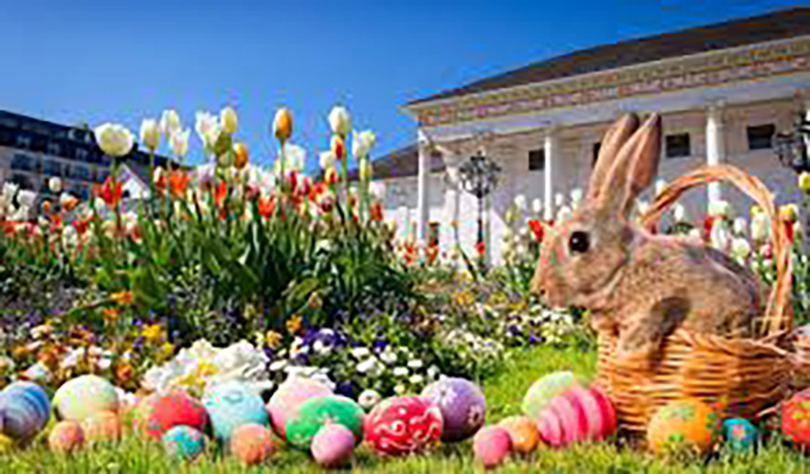
An Easter basket is a must — filled with chocolate bunnies, candy, and small gifts. Another tradition is egg rolling: whoever rolls their egg the farthest wins!
In sunny California, Easter has a vibe all its own.
California: Sunshine and Festivals
Easter in California is all about the open-air lifestyle — barbecues, beaches, sunshine, and cultural diversity. In Los Angeles, large gospel-filled services are followed by Latin-style parties with tamales and sweet bread. In San Francisco, you’ll find Filipino, Greek, and even Ethiopian Easter feasts.
In sunny California, Easter has a vibe all its own.
California: Sunshine and Festivals
Easter in California is all about the open-air lifestyle — barbecues, beaches, sunshine, and cultural diversity. In Los Angeles, large gospel-filled services are followed by Latin-style parties with tamales and sweet bread. In San Francisco, you’ll find Filipino, Greek, and even Ethiopian Easter feasts.
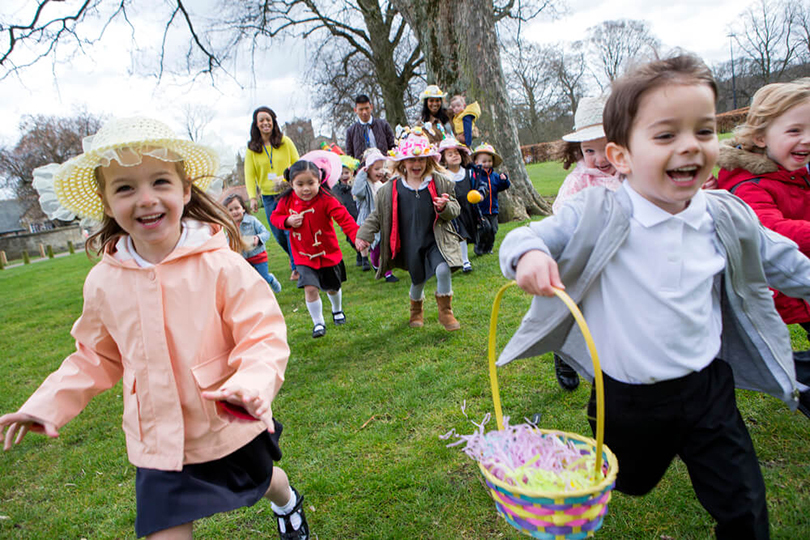
Parks host picnics, egg hunts, and parades in Beverly Hills and Santa Barbara, complete with decorated cars. And of course, it’s all Instagram-ready: photo zones, mimosa-filled Easter brunches, vegan cupcakes, and designer eggs. In Palm Springs, Easter can even feel like a stylish pool party with a DJ.
Fun Easter Facts You Might Not Know
Fun Easter Facts You Might Not Know
- The world’s largest Easter egg was made in Italy in 2011 — over 10 meters tall and weighing more than 7 tons!
- In Poland, the Monday after Easter is Śmigus-Dyngus or Wet Monday — everyone splashes water on each other, especially boys on girls!
- In England, people play egg jarping — a kind of egg duel.
- In Norway, people read crime novels over Easter! Publishers even release special “Easter thrillers” — Påskekrim.
- In the US, over 16 billion jelly beans are bought for Easter — enough to circle the Earth three times!
Easter is a time of renewal, hope, and spring. Some light candles in churches, others paint eggs, sing, and dance. But the meaning remains the same — being close to loved ones and feeling joy.







